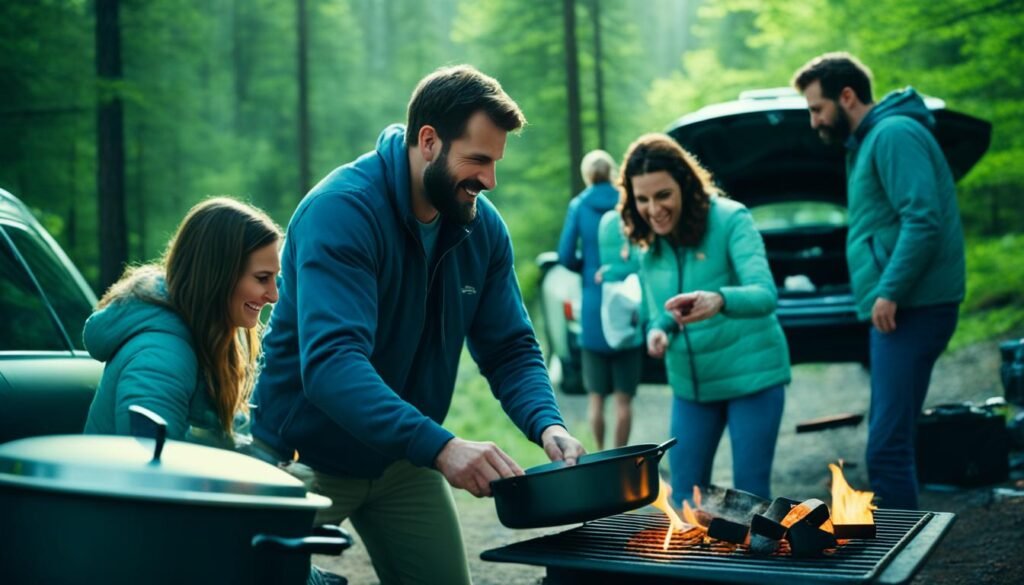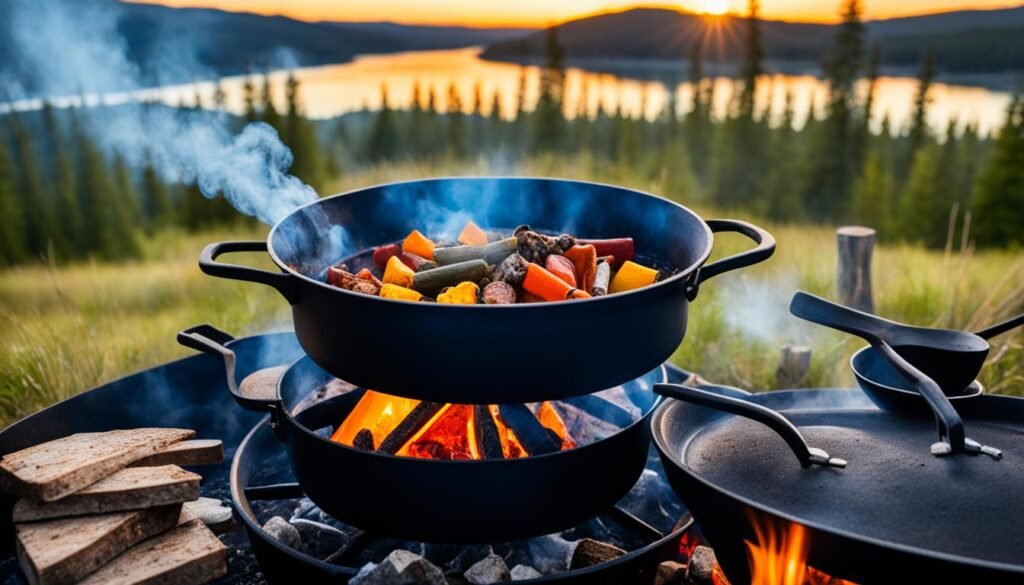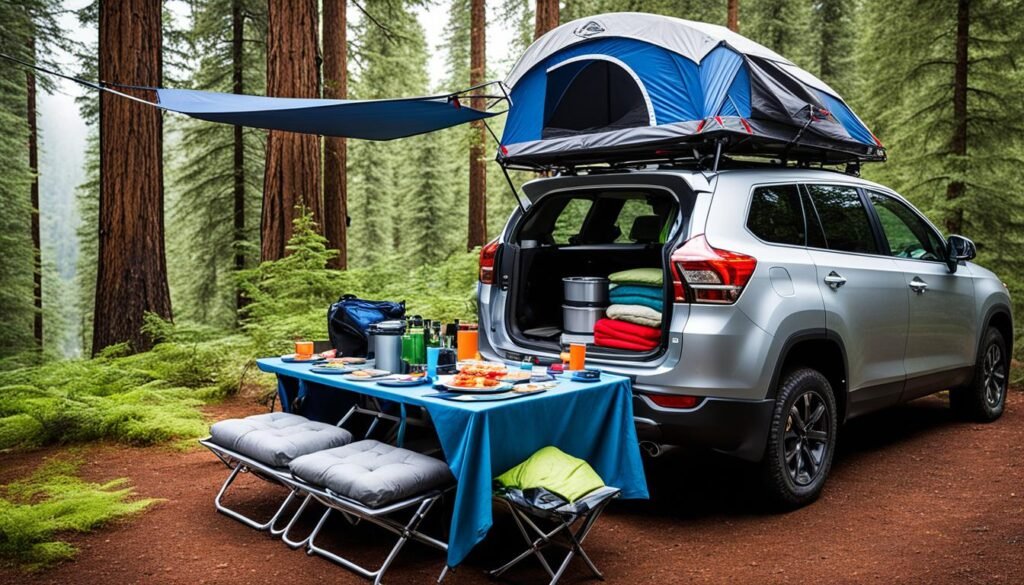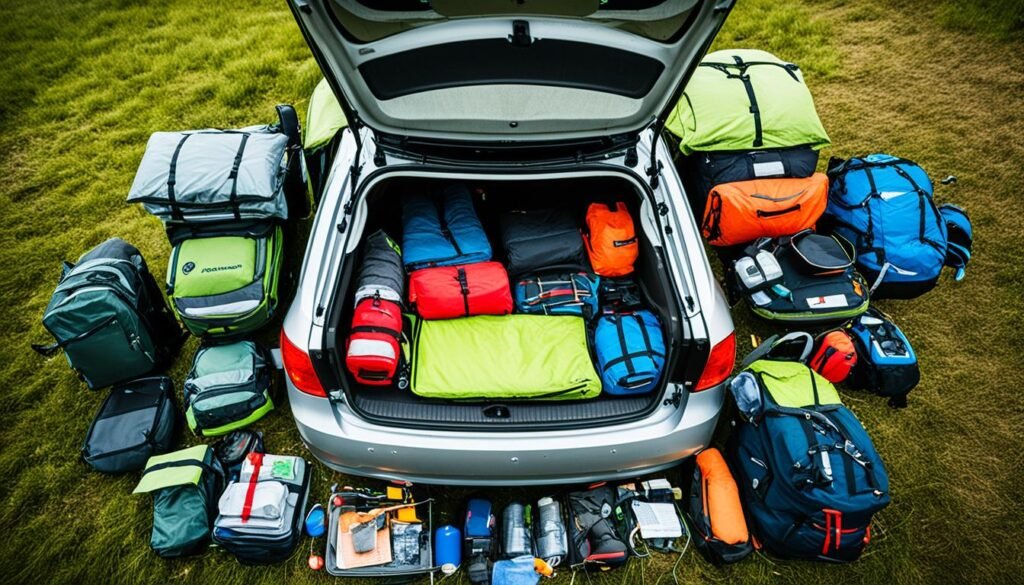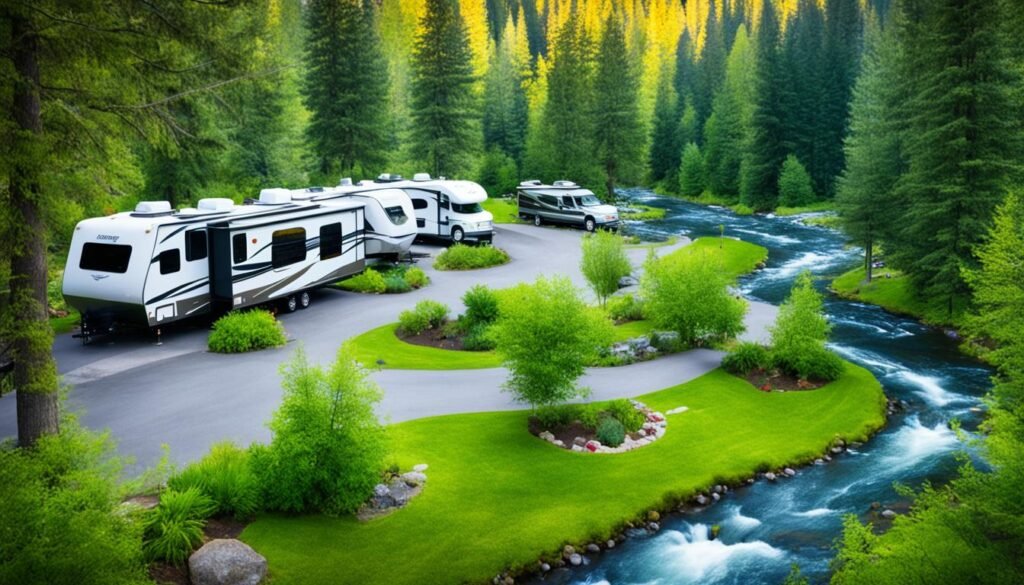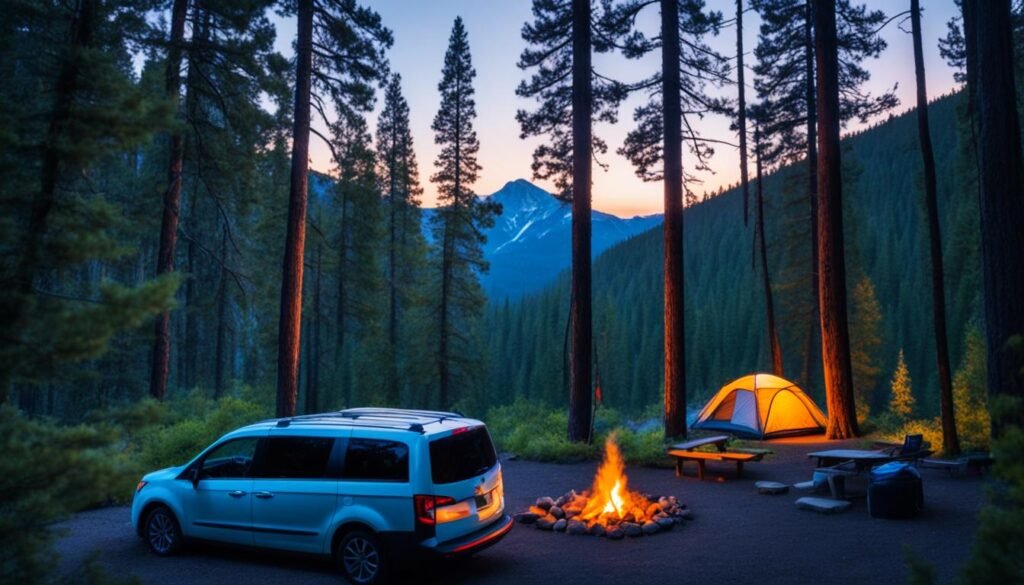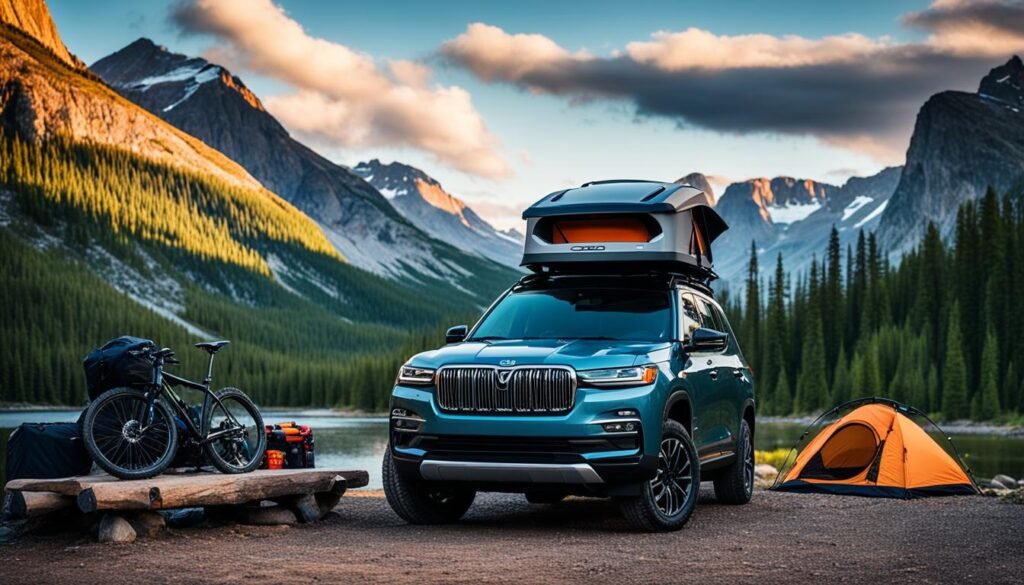When planning a camping trip, it’s important to know the rules and regulations of the parks you’ll be visiting. Car camping, where you sleep in your vehicle instead of a traditional tent or RV, is a popular option for outdoor enthusiasts. But do state parks allow car camping? The answer can vary depending on the park.
State parks are managed by individual states and they have their own set of rules when it comes to camping. While some state parks do allow car camping within designated campgrounds, others may have restrictions in place that only permit tent or RV camping. These regulations are in place to protect the environment and ensure the safety and enjoyment of all visitors.
If you’re planning to car camp in a state park, it’s important to research the specific park you’ll be visiting. Check their website or contact their office to find out their regulations regarding car camping. Making reservations at the specific state park campground is also advisable to secure your spot.
Key Takeaways:
- Car camping regulations in state parks vary.
- Some state parks allow car camping within designated campgrounds.
- Other state parks may only permit tent or RV camping.
- Research and make reservations at the specific state park you plan to visit.
- Comply with the regulations to ensure the preservation of the environment and the enjoyment of all visitors.
National Parks and Car Camping
When it comes to car camping in national parks, there are specific regulations and restrictions to keep in mind. The primary goal of these regulations is to protect the delicate ecosystems, manage visitor flow, and preserve the natural beauty of the parks. In most national parks, car camping is not allowed at trailheads, on the side of the road, or in pull-outs. Instead, visitors are required to make reservations at established campgrounds.
Reserving a campground ensures that the park can accommodate the number of visitors and maintain the necessary facilities and amenities. It also helps prevent overcrowding and minimizes the impact on the environment.
“Most national parks do not allow car camping at trailheads, on the side of the road, or pull-outs. Reservations at established campgrounds are usually required.”
However, there are exceptions to this general rule. For example, Death Valley National Park allows dispersed car camping within the park. Dispersed camping refers to camping without a reservation or payment and is typically done in remote areas where there are no established campgrounds. It provides an opportunity for a more adventurous camping experience, away from the crowds.
It is essential to familiarize yourself with the specific regulations of each national park you plan to visit. These regulations can change, and it is always best to consult the official website of the park for the most up-to-date information on car camping regulations. This will ensure that you are well-informed and compliant during your visit.
Car Camping Regulations in Select National Parks
| National Park | Car Camping Allowed | Dispersed Camping Allowed | Reservation Required |
|---|---|---|---|
| Yellowstone National Park | No | No | Yes |
| Yosemite National Park | No | No | Yes |
| Grand Canyon National Park | No | No | Yes |
| Death Valley National Park | Yes (disbursed) | Yes | No (for dispersed camping) |
National Forests and Car Camping
National forests offer a unique camping experience, allowing visitors to explore the land and enjoy the great outdoors with fewer restrictions than national parks. Car camping in national forests provides an opportunity for nature enthusiasts to immerse themselves in secluded spots and enjoy the serenity of the wilderness.
One of the key advantages of car camping in national forests is the opportunity for dispersed camping. Dispersed camping refers to camping outside of designated campgrounds, allowing campers to find their own private spots away from the crowds. This is particularly appealing for those seeking a more intimate and solitary camping experience.
However, it’s important to note that dispersed camping areas in national forests may not provide amenities commonly found in established campgrounds, such as bathrooms, showers, and fire rings. Campers should come prepared with the necessary equipment and supplies to ensure a comfortable stay.
When planning a car camping trip in a national forest, it’s crucial to research the specific forest and its rules for dispersed camping. Each national forest may have different regulations and guidelines in place, including restrictions on where camping is allowed and the maximum duration of stay. Some forest roads may also require off-road or high-clearance vehicles for access, so it’s important to be aware of any vehicle requirements.
In addition to adhering to the rules and regulations of the national forest, practicing Leave No Trace principles is essential. This means leaving the camping area as you found it and minimizing your impact on the environment. By responsibly enjoying national forests, you contribute to the preservation of these natural spaces for future generations to enjoy.
Tips for Car Camping in National Forests:
- Research the specific national forest and its rules for dispersed camping
- Come prepared with camping equipment and supplies
- Be aware of any vehicle requirements for accessing forest roads
- Follow Leave No Trace principles to minimize your impact on the environment
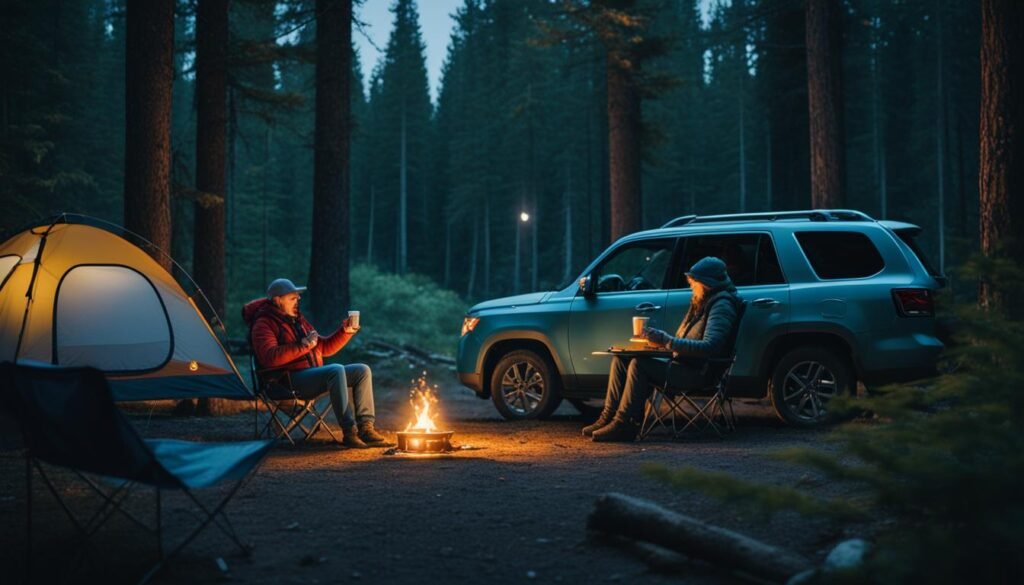
State Parks and Car Camping
When it comes to car camping, state parks offer a wonderful opportunity to reconnect with nature and enjoy the great outdoors. These parks, although smaller in size compared to national parks or forests, are often packed with beauty and adventure. State parks typically allow car camping within their designated campgrounds, providing a convenient and accessible option for campers.
While most state parks permit car camping, it’s important to note that some may enforce restrictions, allowing only tent or RV camping. These specific regulations vary from park to park, so it’s essential to research the rules and guidelines of the state park you plan to visit. By doing so, you can ensure compliance and make the most of your car camping experience.
In order to maintain the flow of visitors and manage campground occupancy, state parks often require campground reservations, especially during peak seasons and busy weekends. Reserving your spot in advance guarantees you a spot to enjoy your car camping adventure. It’s advisable to check the park’s official website or call the park office to make your reservation and secure your place.
State park campgrounds may offer amenities such as bathrooms and fire rings, helping to enhance your camping experience. These facilities provide convenience and comfort during your stay, ensuring you have everything you need for an enjoyable trip. Additionally, it’s worth noting that some state parks may have specific requirements for tent camping versus RV camping, so be sure to familiarize yourself with any guidelines outlined by the park.
With their natural beauty, diverse landscapes, and the opportunity to camp in your car, state parks are a fantastic option for car camping enthusiasts. Whether you’re seeking a peaceful retreat in the woods or an adventurous exploration of hiking trails, state parks offer something for everyone. Remember to make your campground reservations and come prepared with all the necessary camping gear for a memorable experience.
Bureau of Land Management and Car Camping
The Bureau of Land Management (BLM) offers vast open land areas where camping is allowed, including dispersed camping. Dispersed camping on BLM land is a popular choice for outdoor enthusiasts looking for free camping options. Unlike traditional campgrounds, dispersed camping allows campers to set up their campsites in undeveloped areas, providing a more remote and secluded experience.
To ensure the preservation of the land and the enjoyment of future campers, there are rules and regulations that need to be followed when dispersed camping on BLM land. These rules include staying on established roads and using designated dispersed campsites. By adhering to these guidelines, campers can help protect the natural resources, maintain the beauty of the land, and minimize their impact on the environment.
In addition to dispersed camping, some BLM areas also offer established campgrounds for a fee. These campgrounds often provide amenities such as fire rings and toilets, offering a more developed camping experience for those who prefer it. Availability of these campgrounds may vary depending on the season, so it’s essential to check with the local BLM office or their website for up-to-date information.
The Bureau of Land Management is dedicated to managing and preserving public lands for the enjoyment of all individuals. Whether you choose dispersed camping or an established campground, camping on BLM land provides the opportunity to connect with nature, explore wide-open spaces, and experience the beauty of the great outdoors.
| Pros and Cons of Camping on BLM Land | |
|---|---|
| Pros | Cons |
| Free camping | Limited amenities |
| Secluded and remote locations | Varying availability of established campgrounds |
| Less crowded than traditional campgrounds | Rules and regulations to follow |
| Opportunity to practice Leave No Trace principles | May require more preparation and self-sufficiency |
Tips for Camping on BLM Land
- Familiarize yourself with the rules and regulations specific to the BLM area you plan to camp in.
- Observe any fire restrictions and ensure proper fire safety practices.
- Respect the land and wildlife by practicing Leave No Trace principles, such as packing out all trash and keeping a safe distance from wildlife.
- Bring adequate water, food, and supplies, as amenities may be limited or nonexistent in dispersed camping areas.
- Plan your trip accordingly, considering the location’s accessibility, weather conditions, and any necessary permits or passes.
Public Parking Lots for Car Camping
As a last resort, when there are no nearby national parks, forests, or BLM land, public parking lots can serve as temporary safe spots for car camping. Retail establishments such as Walmart, Home Depot, gyms, or truck stops often allow overnight parking for campers. While this may not offer the same camping experience as being in nature, it can provide a convenient and secure option for a night or two of rest.
When using public parking lots for car camping, it is crucial to respect the rules and regulations set by the establishment. Check for any specific guidelines or restrictions, such as designated areas for camping or time limits for parking. It is advisable to call the store’s manager or inquire with the staff to ensure compliance and to determine if any fees or permits are required.
Although public parking lots may not offer the scenic beauty of national parks or forests, they often provide the convenience of nearby amenities. Stores like Walmart typically have restrooms, and some even have 24-hour access to food and supplies. Access to facilities such as showers or electricity may vary or may not be available, so it’s essential to plan accordingly.
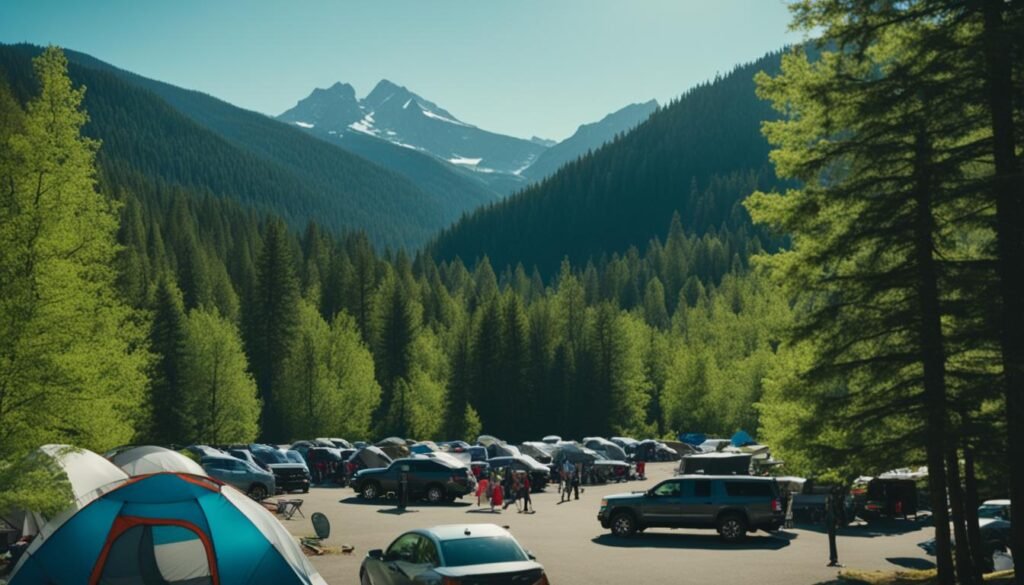
When camping in public parking lots, it is crucial to prioritize safety and be considerate of others. Park in well-lit areas, keep noise levels low, and avoid blocking traffic or parking spaces. Always clean up after yourself and practice proper waste disposal, ensuring you leave no trace.
Tips for car camping in public parking lots:
- Choose a well-lit area for safety.
- Respect the rules and regulations of the establishment.
- Be considerate of other customers or campers.
- Keep noise levels low, especially during nighttime hours.
- Park in designated areas and avoid blocking traffic or parking spaces.
- Practice proper waste disposal and leave no trace.
While car camping in public parking lots should only be considered as a last resort, it can provide a temporary solution when other options are limited. However, it’s important to note that this may not be a long-term or sustainable camping choice. For a more immersive and nature-focused experience, exploring state parks, national parks, national forests, or BLM land is highly recommended.
Tips for Finding Car Camping Spots
When it comes to finding the perfect car camping spots, there are several apps and websites that can be valuable resources. These platforms offer comprehensive information on a wide range of campgrounds, both free and public, located within parks, forests, and BLM land across the United States. By utilizing these tools, campers can easily discover the best car camping locations that suit their preferences and needs.
Finding Car Camping Spots with Apps and Websites
- The Dyrt app: This popular app provides campers with access to a vast database of campgrounds, including car camping spots. It offers detailed information on amenities, availability, and user reviews, making it easier to choose the perfect location with confidence.
- iOverlander: This app is a fantastic resource for car campers who prefer to explore off-the-beaten-path locations. It provides information on dispersed camping spots, as well as established campgrounds, complete with user reviews and tips.
- Freecampsites.net: As the name suggests, this website focuses on providing campers with detailed information on free camping options. It features a user-friendly interface that allows users to search for car camping spots based on location, availability, and amenities.
- Recreation.gov: This website is an excellent resource for finding car camping spots in national parks, national forests, and other public lands. It allows campers to search for campgrounds based on their desired location, dates, and specific amenities.
By utilizing these apps and websites, campers can streamline their search for the perfect car camping spot. With comprehensive information on availability, amenities, and user reviews, these resources ensure a more enjoyable and stress-free camping experience.
“Planning ahead and utilizing resources like The Dyrt app and iOverlander can greatly enhance your car camping experience by helping you find the best camping spots and ensuring availability.”
| App/Website | Features |
|---|---|
| The Dyrt app | Comprehensive campground database, amenities, availability, user reviews |
| iOverlander | Information on dispersed camping, user reviews, tips |
| Freecampsites.net | Focus on free camping, location-based search, user-friendly interface |
| Recreation.gov | Search for campgrounds in national parks, forests, public lands, amenities, availability |
These apps and websites provide campers with valuable resources for finding the ideal car camping spots. Whether it’s a national park, national forest, or BLM land, these tools offer a wealth of information to help make the camping experience even more memorable.
Can I Find State Parks in Alabama that Allow Car Camping?
Yes, there are several state parks in Alabama that allow car camping. With their picturesque views and natural beauty, these parks provide the perfect setting for car camping in Alabama. Visitors can enjoy outdoor activities and explore the stunning landscapes while experiencing the convenience of car camping in Alabama.
Can I Car Camp at State Parks if I Usually Camp at RV Parks?
Yes, many state parks allow rv parks and car camping. While some may have restrictions on where you can park your car, others have designated areas for car camping. Check the rules for each park before you go. Happy camping!
Conclusion
Car camping is a versatile and convenient choice for outdoor enthusiasts, providing a range of options for enjoying the great outdoors. Whether you prefer the amenities offered by state parks, the regulated beauty of national parks, the freedom of national forests, or the expansive landscapes of BLM land, there are plenty of opportunities to embark on a car camping adventure.
However, it is crucial to plan and research your car camping trip in advance. Make campground reservations when required to secure a spot in popular locations, and familiarize yourself with the rules and regulations of each area you plan to visit. Remember to practice Leave No Trace principles to help preserve the environment for future generations.
With proper preparation and adherence to guidelines, car camping offers countless opportunities for memorable experiences in nature. So gather your camping gear, map out your route, and embark on a car camping journey to discover the beauty and tranquility of the great outdoors.
FAQ
Do all state parks allow car camping?
Car camping regulations vary by state parks. While some state parks allow car camping within designated campgrounds, others may only permit tent or RV camping. It is important to research and make reservations at the specific state park you plan to visit in order to ensure compliance with their regulations.
Can you car camp at national parks?
Most national parks do not allow car camping at trailheads, on the side of the road, or pull-outs. Reservations at established campgrounds are usually required. However, there are a few exceptions. For example, Death Valley National Park allows dispersed car camping within the park. It is important to check the website of the specific national park for the most up-to-date regulations on car camping.
What are the car camping regulations in national forests?
National forests are multi-use areas that allow camping and exploration of the land with limited rules and regulations compared to national parks. They offer opportunities for dispersed camping, where campers can find secluded spots to set up camp. However, amenities like bathrooms, showers, and fire rings may not be available in dispersed camping areas. It is important to research the specific national forest and its rules for dispersed camping before setting out.
Can you car camp at state parks?
State parks usually allow car camping within their campgrounds, but some may enforce tent or RV camping only. Campground reservations are often required to control the flow of visitors, especially during busy weekends. Amenities such as bathrooms and fire rings may be available in state park campgrounds, and some parks may have specific requirements for tent camping versus RV camping.
Can you car camp on Bureau of Land Management (BLM) land?
The Bureau of Land Management (BLM) manages large areas of open land that are free for camping, including dispersed camping. Dispersed camping on BLM land is usually free and does not require a reservation. However, there are rules and regulations to follow, such as staying on established roads and using designated dispersed campsites.
Can you car camp in public parking lots?
As a last resort, public parking lots such as Walmart, Home Depot, gyms, or truck stops can be used for car camping for a night or two. It is advisable to check the specific rules and regulations of the parking lot or call the store’s manager to ensure car camping is allowed.
How can I find car camping spots?
There are various apps and websites available that can help in finding car camping spots within parks, forests, and BLM land. The Dyrt app, iOverlander, freecampsites.net, and Recreation.gov are recommended resources for finding free and public campgrounds across the United States.
What should I consider when planning a car camping trip?
When planning a car camping trip, it is important to research and make reservations for campgrounds when required, follow the rules and regulations of each area, and practice Leave No Trace principles to ensure the preservation of the environment. With proper planning and preparation, car camping can provide memorable experiences in nature.

